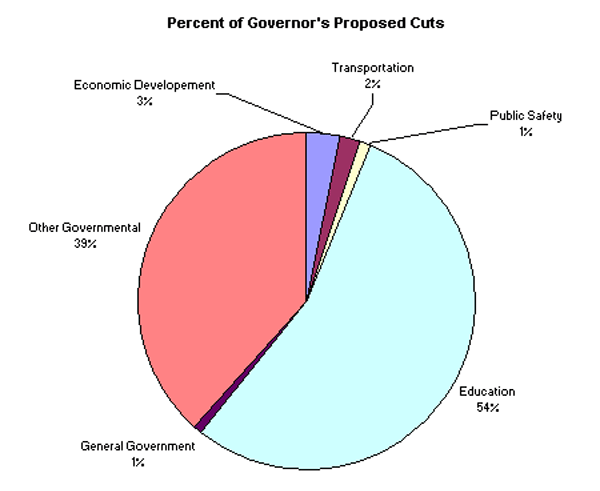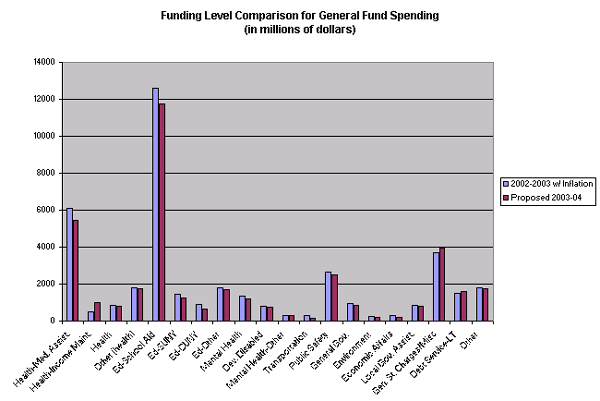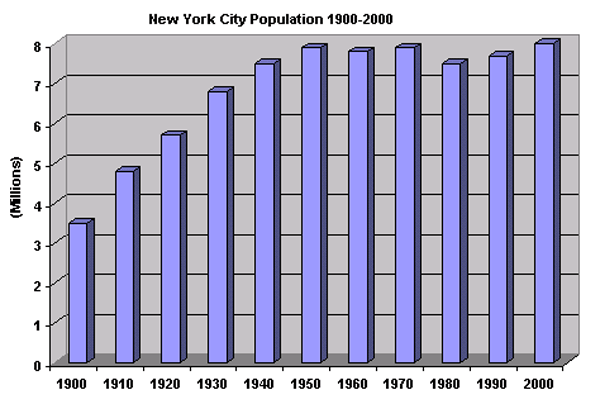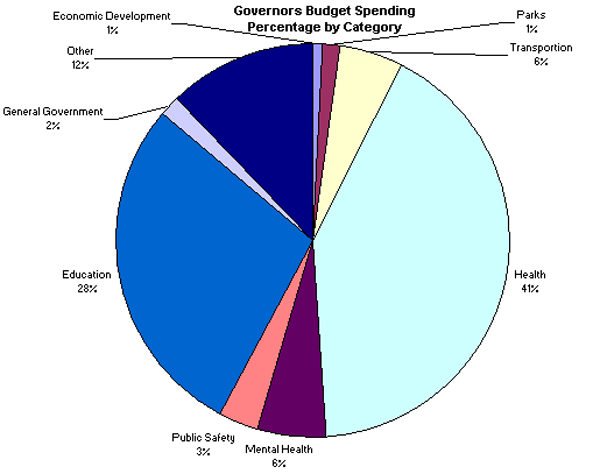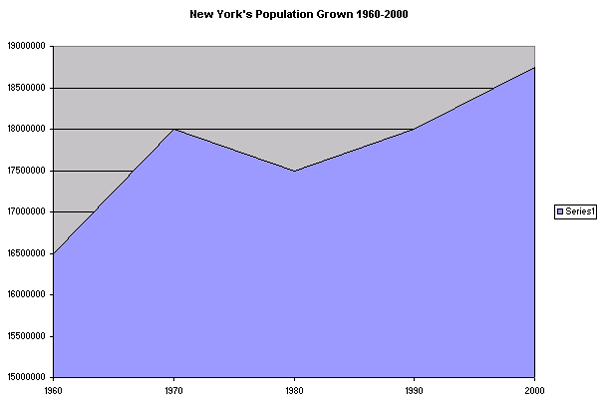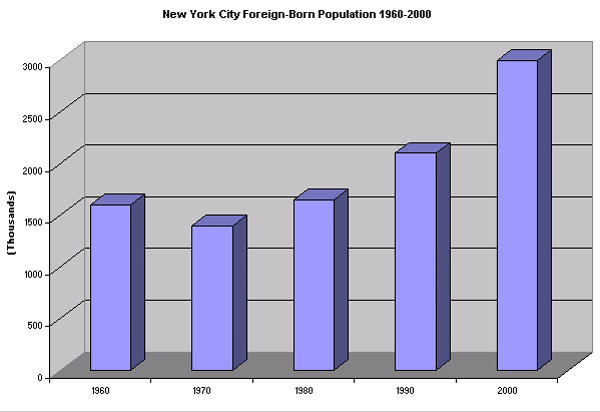THE RIGHT CHOICE FOR NEW YORK:
A FAIR, ADEQUATE AND ECONOMICALLY
SENSIBLE TAX SYSTEM
The Executive Budget estimates that New York State faces a $9.3
billion budget gap during the upcoming 2002-2003 state fiscal
year. On the one hand, this gap would be much larger if sate
services and aid to localities had not been cut back so much,
relative to even the Budget Division's own baseline, over the
last decade. On the other hand, this gap would be much smaller,
or nonexistent, if New York State had been only slightly less
generous in its multi-year tax cutting. For example, if the
state had enacted only 82.5% of the tax cuts that it actually
enacted during its 1994 to 2000 tax cutting spree, there would
be no budget gap and Governor Pataki would still be able to take
credit for the largest multi-year tax reduction program in the
history of this or any other state - $11.1 billion during the
upcoming state fiscal year and an estimated $53 billion during
his eight years in office.
Balancing the state budget during the current
recession
During a recession, unemployment increases, the number of hours
worked declines, consumer spending declines, etc. translate into
a reduction in government tax revenues - sometimes absolutely and
almost always in terms of the rate of growth. Some aspects of
government spending, particularly spending on safety net programs
like unemployment insurance, income support programs, and
Medicaid, also increase during recessions as an increasing
number of workers are laid off. With revenues declining and
some expenditures increasing, states and localities almost
always face increasing budget deficits during recessions.
The situation this year is compounded by the bursting of the
Wall Street bubble and the results of the September 11th
attacks.
Federal Assistance - for the states
Generally and for New York State specifically
For the States generally: In the current economic stimulus
debate at the national level, the National Governors Association
and others have succeeded in making this dilemma part of the
debate. In late July, the U.S. Senate adopted an 18-month
"state fiscal relief" measure which would have provided
the states with $7 billion of fiscal relief over 18 months by
temporarily increasing the federal Medicaid match rate (referred
to formally as the Federal Medical Assistance Percentage or FMAP)
and increasing Title XX Social Service Block Grant payments. New
York would have received about $1.1 billion of that assistance.
This proposal by Jay Rockefeller (D-WV) and Susan Collins (R-ME)
was added as an amendment to the Schumer-McCain prescription drug
bill (S. 812) by an overwhelming bi-partisan majority (75-24).
While the Schumer-McCain bill passed the Senate, it was never
considered by the House of Representatives; and President Bush
did not include any provision for state fiscal relief in the
economic stimulus package that he currently has pending before
the Congress.
On the bright side, support remains strong in the US Senate,
and Representatives Peter King (R-NY) and Sherrod Brown (D-OH)
have obtained broad bi-partisan co-sponsorship for a 12-month
State Fiscal Relief Act that they will be reintroducing in the
near future. This bill would provide a 2% increase, retroactive
to October 1, 2002, in the federal Medicaid match rate for all
states that maintain their current Medicaid eligibility levels.
Under this bill, states that have high unemployment (defined
as having a state unemployment rate higher than the national
average for three consecutive months) would be eligible for an
additional 2.5 percentage point increase in their FMAP provided
that they maintain current eligibility levels."
New York's public and private sector leaders should work with
New York's congressional delegation, the Bush Administration and
public and private sector leaders from other states to ensure
that the federal government provides "state fiscal
relief" as part of its efforts to deal with the effects
of the current recession.
For New York and any other states that are ever the victims
of international terrorist attacks reforms must be accomplished.
The United States has never before had to deal with the effects of
terrorist attacks on American soil. The country now knows that
such attacks are possible. And, the Congress should put into
place laws that will treat New York, and any other areas that
might bear the brunt of such attacks in the future, in a fair
and equitable manner.
New York's public and private sector leaders should work with
New York's congressional delegation, the Bush Administration
and public and private sector leaders from other states to
secure amendments to the Stafford Act (the Federal Emergency
Management Act) that would allow New York State and New York
City to receive federal aid for tax revenue losses directly
attributable to the WTC attacks and which would allow other
states and cities to receive such aid in the event of future
attacks. Governor Pataki initially raised this issue in his
October 2001 request for federal help, but since then the
state's emphasis has shifted to federal money for other
purposes. HR 5523/S 3055, as introduced in the last Congress
by Congresswoman Carolyn Maloney et al. and Senators Schumer
and Clinton, would allow states and localities to receive federal
reimbursement for a substantial portion of revenue losses directly
attributable to terrorist attacks.
But because of its balanced budget requirement, New York like
the other 48 states with balanced budget requirements of one kind
or another, is almost always forced to cut spending and/or increase
taxes during a recession. Unfortunately, cutting state spending
and/or increasing state taxes during a recession serves to make
the situation worse rather than better. It is also the opposite
of what the federal government is doing to stimulate the economy
and serves to cancel out the impact of some or all of those
federal actions.
Closing the remaining budget gap in a fair,
balanced and economically sensible manner
While federal assistance and one time revenues (from rainy day
funds or "gimmicks" such as tax amnesty programs) can reduce the
size of the recession-generated budget gap that the state must
close, it is now clear that New York will not be able to get
through the current recession without some painful spending
cuts and/or tax increases. In this context, the key challenge
involves choosing that mix of spending cuts and/or tax increases
that will do the least harm to the state's economy during the
current economic downturn.
A sound framework for evaluating these difficult choices is
provided by Joseph Stiglitz, a professor of economics at Columbia
University and one of the recipients of the 2001 Nobel Prize in
economics, and Peter Orszag of the Brookings Institution. In a
recent paper published by the Center on Budget and Policy
Priorities, Siglitz and Orszag point out that while some state
officials apparently believe that reducing spending is preferable
to raising taxes, "economic analysis suggests that tax increases
would not in general be more harmful to the economy than spending
reductions. Indeed, in the short run (which is the period of
concern during a downturn), the adverse impact of a tax increase
on the economy may, if anything, be smaller than the adverse
impact of a spending reduction, because some of the tax increase
would result in reduced saving rather than reduced consumption." 1
For example, if taxes increase by $1, consumption may fall by 90 cents
and saving may fall by 10 cents. Since a tax increase does not reduce
consumption on a dollar-for-dollar basis, its negative impact on the
economy is reduced in the short run. By contrast, some types of spending
reductions would reduce demand in the economy on a dollar-for-dollar basis
and therefore would be more harmful to the economy than a tax increase.
Applying this basic set of economic principles, Stiglitz and Orszag
conclude that "direct spending reductions will generate more adverse
consequences for the economy in the short run than either a tax increase
or a transfer program reduction. The reason is that some of any tax
increase or transfer payment reduction would reduce saving rather than
consumption, lessening its impact on the economy in the short run,
whereas the full amount of government spending on goods and services
would directly reduce consumption."
In comparing tax increases and reductions in transfer payments,
the impact on the economy depends primarily on the propensity to
consume of the households affected. A recent Congressional Budget
Office report noted that, "As a general proposition,
higher-income households save more of their income than do
lower-income households. Although occasionally some data
emerge to indicate otherwise, a large accumulation of evidence
continues to show that as a household's income rises, the
proportion of that income that is consumed falls." 2 The
more that tax increases and transfer payment reductions are
focused on those with lower propensities to spend (that is, on
those who spend less and save more of each additional dollar of
income), the less damage is done to the weakened economy. Since
higher-income households tend to have lower propensities to spend
than lower-income households, the least damaging approach in the
short run involves tax increases concentrated on higher-income
households. Across the board tax increases and reductions in
transfer payments to low-income families would generally be more
harmful to the economy than increases in taxes on higher-income
families.
Stiglitz and Orszag also point out that these arguments are even
stronger for state policymakers who are more interested in the
impact of policy options on their own state's economy than on the
national economy. "In particular, government spending that
would be reduced if direct spending programs are cut is often
concentrated among local businesses. . . . By contrast, the
spending by individuals and businesses that would be affected
by tax increases often is less concentrated among local producers.
Since part of the decline in purchases that would occur if taxes
were raised would be a decline in the purchase of goods produced
out of state." They also point out that this is particularly true
for expenditures by high-income households, who "appear to
consume relatively more goods and services produced in other
regions of the country (or abroad) than lower-income families
do."
As New York policy makers consider options for balancing the
state's budget during the current economic downturn, Stiglitz
and Orszag present the following policy relevant conclusions:
1. Tax increases on higher-income households are the least
damaging mechanism for closing state fiscal deficits in the
short run. Reductions in government spending on goods and
services, or reductions in transfer payments to lower-income
families, are likely to be more damaging to the economy in the
short run.
2. Given the existence of balanced budget rules at the state
level, some form of federal fiscal relief to states is warranted
since state spending reductions or tax increases would be
counter-productive at this time by restraining the economy
at a time when it is already slowing.
Suggestions for pursuing the second of these two conclusions
that were presented above:
An approach to implementing the first of these two conclusions
can be drawn from North Carolina. In late 2001, North Carolina
policymakers, as part of an effort to deal with the impact of the
recession on their state's budget, adopted legislation increasing
that state's top personal income tax rate from 7.75% to 8.25% for
three calendar years - 2001, 2002 and 2003. New York's top
personal income tax rate is currently 6.85%.
It has been estimated by the Fiscal Policy Institute that a
surcharge of seven tenths of one percent (.007) on the portions
of a taxpayer's New York Adjusted Gross Income above $100,000
and another seven tenths of one percent (.007) on the portions
above would generate between $2.7 and $3 billion per year
(depending on the accuracy of the Division of the Budget's
projected decline in personal income tax receipts). Imposing
such a surcharge for two years (2002 and 2003) would temporarily
raise New York State's top tax rate to the same level as North
Carolina's top rate.
While this proposal would increase state tax revenues by
between $2.7 to $3.0 billion annually, approximately 20%
of this amount would come from nonresident taxpayers, who on
average have much, much higher incomes than New York residents,
and the federal treasury would be covering a third of the
remainder as a result of the federal deductibility of state
and local income taxes.
The overall change in the disposable incomes of affected
taxpayers will, in fact, be positive for another reason: President
Bush's generous tax cuts. If you earn $300,000 a year, President
Bush's 2001 tax cuts will be reducing your federal income tax
bill by about $5,000 this year - and this break might be even
larger if the President succeeds in his efforts to get the
Congress to accelerate the remaining steps of the 2001 tax
cut and to enact additional tax cuts. But even if none of
the President's additional recommendations are adopted, a
taxpayer at this income level would still see a net tax cut
of over $3,500 under this surcharge proposal because of the
Bush tax cuts and the benefits of federal deductibility.
Other proposals of this type have also been advanced. Adding a
one percent surcharge on the portions of Adjusted Gross Income
above $150,000, as some legislators have suggested, would raise
about $2 billion per year. And, the Schuyler Center for Analysis
and Advocacy has suggested adding a temporary additional tax
bracket of 7.85% (one percent above the current top rate of
6.85% that kicks in at taxable income levels of $20,000 for
single individuals and $40,000 for married couples) on the
portion of taxable income over $100,000 for individuals,
over $200,000 for married couples, and over $150,000 for
heads of households. This plan would increase revenues by
approximately $1.4 to $1.6 billion per year.
All of these proposals would have a less negative effect on
the New York economy than cuts in state and local services
produced or provided locally or increases in fees or regressive
taxes. These proposals all have several other advantages as
well. First, they would only increase the effective tax rate
for those taxpayers who are currently paying less of their
income in state and local taxes than the other 90% to 95% of
New York taxpayers. Second, a substantial portion of these
tax increases would be paid by residents of other states and
other countries. Third, because of federal deductibility of
state and local income taxes, the federal government would be
paying for about a third of the bill.
Dealing with New York's Structural Budget Problems by
Reestablishing a Fair Tax System
In both the long run and the short run, reestablishing a fair
and adequate tax system is a far preferable solution to New
York's continuing fiscal problems rather than further spending
cuts. When polled about state budget priorities, most state
voters would gladly forego tax cuts in order to avoid cuts in
social programs or the layoff of state workers. While there
is a very vocal minority of talk-show callers who take an
adamant anti-government position, most New Yorkers understand
that the services provided by government make an important
contribution to the functioning of the state's economy and
the maintenance of essential quality of life services. Most
New Yorkers are also supportive of programs that provide a
social safety net and assist the needy in effective and
efficient ways.
New York State has a great deal of room within which to implement
a "fair tax" solution, because tax changes that
made the system less fair and less adequate are at the root of
the problem. The personal income tax is still progressive but
it is less progressive than in the past and, thus, less able to
balance out the regressive nature of the state's property and
sales taxes. The state's corporate income taxes have become
more and more like Swiss cheese. General business corporations
for example, have gone from carrying over 10% of New York State's
tax load in the late 1970s to less than 4% today.
Restore a Bit of Progress to the Personal Income
Tax:
The personal income tax cuts enacted in 1987 and expanded
in 1995 have proven to be both unfair and unaffordable. The
cuts were basically "off the top," reducing New York's
highest marginal tax rate from 13.5 percent on unearned income
and 9.5 percent on earned income to 6.85 percent on both types
of income.
Since the mid-1970's, New York State has cut its top PIT
rate from 15.375 percent to 6.85 percent. Before the 1987
tax cuts, the state's top rate was 13.5 percent on investment
income and 9.5 percent on wages, salaries and business income.
By restoring only a small portion of the progress that was
eliminated by the 1987 and 1995 tax cuts, approximately $2
billion could be generated for socially and economically
productive investments in the state's human and physical
infrastructure.
Eliminate Corporate Loopholes That Don't Create Jobs:
The state's annual Tax Expenditure Report shows that business
corporations receive over $1.6 billion in tax breaks each year.
The Pataki Administration has attempted to solve this
"problem" by dropping many of the state's corporate
loopholes from this annual accounting. In addition, untold
millions more are lost via transfer pricing and other
techniques used by large, multi-national corporations to
avoid paying their fair share of taxes. New York could
reduce leakage from these tax preferences if it adopted
"combined reporting" and replaced its current
Corporate Alternative Minimum Tax with an Alternate Minimum
Assessment of the type adopted last year by New Jersey.
Combined reporting, as currently required by California,
Colorado, Illinois, New Hampshire and the 12 other states,
requires a business to file a single combined return for all
of its business activities. This prevents profitable
multi-state and multi-national corporations from avoiding
state corporate income taxes through accounting tricks that
shift income and expenses among their numerous subsidiary
corporations in order to reduce their overall tax liability
by having inordinately large portions of their income show
up in subsidiaries that are only taxable in so-called
offshore tax havens where tax rates are inordinately low,
or in states that do not have corporate income taxes, or in
states (like Delaware) that have corporate income taxes but
which do not tax the income from trademarks and other
intangibles. The adoption of combined reporting in NY
would raise an estimated $340 million or more on an annual
basis.
New Jersey's new Alternate Minimum Assessment (AMA) applies
only to businesses with gross profits of $1 million or more.
Those businesses are required to pay a new low rate assessment
on either the portion of their gross profits over $1 million
or on the portion of their gross receipts over $2 million,
whichever is less. This new assessment is estimated to raise
between $202 and $234 million per year in New Jersey. In New
York, a similar assessment would raise an estimated $400 million
or more on an annual basis.
Ensuring that taxpayers get their money's worth from business
tax incentives. As part of a general clean up of the state's
tax laws, it is essential that certain basic "common
sense" safeguards be added to the state's growing list of
economic development tax incentives:
* Tax credits created in the name of job creation should include
accountability mechanisms to ensure that the promised job creation
actually materializes.
* Tax credits designed to help areas with poorly performing
economies should have logical criteria and should not write
into permanent law criteria that make permanent some notion of
what those under-performing areas may be at a particular point
in time.
* Tax credits or other government largesse should not be
used to encourage or to reward the creation of jobs at or
below the poverty level. Doing this only drives more money
out of the federal, state and county treasuries in the form
of the income supports that our society appropriately provides
to the working poor.
* Subsidies should not go to firms that violate environmental,
worker safety, or other laws.
* In the new information-based economy, investing in K-12
education; ESL, GED, and adult literacy programs; and,
training for incumbent workers has greater pay-off than
subsidies for low-wage jobs. Education must be protected
from corporate welfare.
* Retail and service businesses that serve local markets
should not be subsidized except in extreme cases.
* No subsidies should be given for intrastate relocations.
Enact a Corporate Disclosure Law:
A growing number of corporations use transfer pricing and a
variety of other subterfuges to minimize the percentage of
their net income that is subject to tax by any state. New
York State should require every publicly-traded corporation
that does business in the state to report its gross and net
income, deductions and credits, and the amount of New York
state taxes paid, much as corporations already do at the
federal level. This would allow taxpayers and policy makers
to identify companies in the state that may be making profits
but, through the use of clever business structures and tax
expenditures, are paying little or no New York taxes. Only
with that information can the state truly know how well its
tax policies are working. The Securities and Exchange
Commission, as part of its response to the Enron scandal,
should require every publicly-traded corporation to file,
as a supplement to its annual report to stockholders, a
50-state spreadsheet that shows its allocation of property,
payroll and sales among the states and its tax payments to
each of the 50 states.
Reform the STAR Property Tax Relief Plan:
In 1997, Governor Pataki got the message that by cutting
the top rate on the state's progressive personal income tax,
he was cutting the wrong tax, in the wrong way, at the wrong
time. In his 1998 State of the State Address, he put a
positive spin on this recognition of the fact that the income
tax is a fair tax and that the overwhelming majority of New
Yorkers do not feel oppressed by it. "Last year we knew
it was time to build on the tax cuts of the first two years.
From this podium, I told you that it was time to cut taxes
again. Different taxes. Oppressive taxes. Property
taxes." It is, however, unfortunate that this focus
on oppressive taxes did not take center stage until after
the state had cut the income tax by over $5 billion a year
with only half of this amount, at most, staying in the New
York economy.
While the Governor's STAR plan addresses an important need,
it does so in an inefficient manner. By allocating property
tax relief in a way that is unrelated to the amount of a
household's property tax bill relative to its income, it
delivers much less relief to those who are truly overburdened
by property taxes than would a substantial expansion of the
state's circuit breaker tax credit -- at one-half the $2.7
billion fully implemented annual cost of the STAR program --
and much more to homeowners for whom property taxes represent
a very small percentage of their income.
Under STAR, the amount of tax relief to which a homeowner
is entitled can vary with the median home value in his or her
county of residence, but not with the magnitude of that
household's property tax burden relative to its income.
The plan's one income test (whether a senior homeowner's income
is above or below $60,000 a year) creates an illogical notch
effect, while begging the question of a rational sliding scale
based on income. While the Governor reports that some people
are being literally taxed out of their homes, his plan does
not target its relief to such households. In addition, two
taxpayers with the same income and the same size property tax
bill could get widely varying levels of relief depending on
where they happen to live.
The STAR plan is also flawed in that it provides relief
only to homeowners. This ignores the fact that tenants
as well pay property taxes. While homeowners pay property
taxes directly, tenants, through their rental payments,
carry a substantial portion (usually estimated as being more
than one-half) of the property taxes paid by the owners of
their buildings. But under STAR, neither tenants nor
landlords receive any relief. Only the owners of owner-occupied
dwellings are helped by STAR.
Providing property tax relief only to those who own their own
homes has an undesirable discriminatory effect, according to
the 1990 Census. At that time, over 62% of white, non-Hispanic
householders lived in owner-occupied dwellings, while the
comparable figures for Hispanic householders was 16.5% and
for black, non-Hispanic householders it was a little less
than 27%. Expanding the circuit breaker would also eliminate
the potential for such unequal treatment since it provides
relief to renters as well as homeowners. (Under the current
circuit breaker, which goes only to New Yorkers with annual
incomes below $18,000, tenants are allowed to count 25% of
their rent as going toward property taxes. In an expanded
circuit breaker for higher-income households, this percentage
could be adjusted if appropriate.)
To ensure fairness, property tax relief should not discriminate
on the basis of geography or on the basis of whether someone
is a renter or a homeowner. STAR fails on both of these
counts. Enriching the state's real property tax circuit
breaker credit would provide a more targeted, cost-effective
means of providing property tax relief to those who are truly
overburdened by the current system.
1 Peter Orszag and Joseph Stiglitz, Budget Cuts vs. Tax
Increases at the State Level: Is One More Counter-Productive
than the Other During a Recession?, Center on Budget and
Policy Priorities, November 6, 2001.
2 Economic Stimulus: Evaluating Proposed Changes in Tax
Policy, U. S. Congressional Budget Office, January 2002.
|


